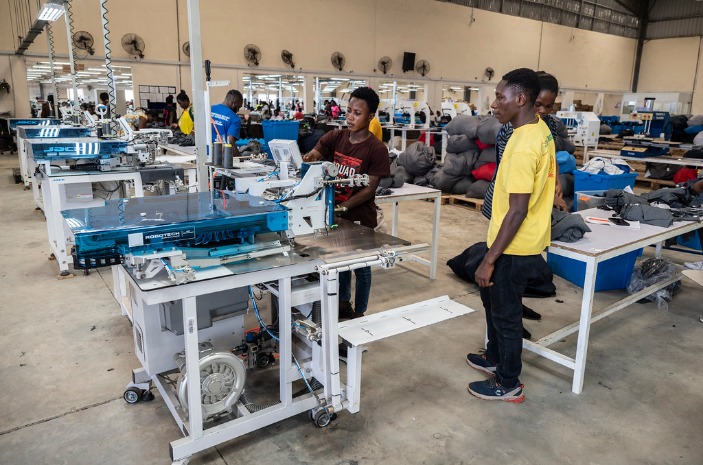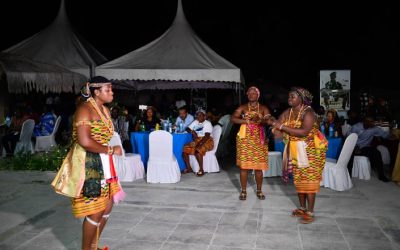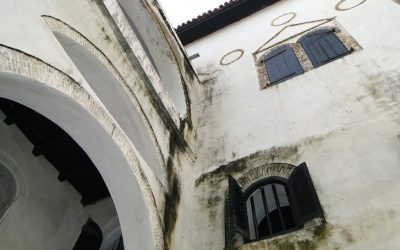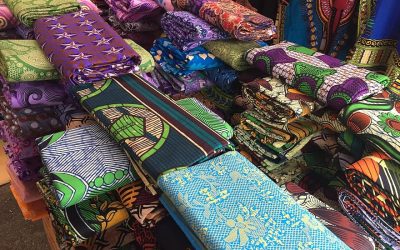Overview of Traditional Clothing in Ghana
Traditional clothing in Ghana reflects the rich cultural heritage and diverse ethnic identities of the nation. These garments are often vibrant, intricately designed, and hold significant cultural symbolism. They are worn during important ceremonies, festivals, and special occasions, showcasing the unique customs and history of Ghanaian communities. Exploring traditional clothing offers a fascinating glimpse into the country’s vibrant cultural landscape.
Historical Significance of Traditional Attire
Traditional clothing in Ghana holds a deep cultural and historical significance, reflecting the rich diversity of the country’s various ethnic groups. These garments are not only worn for everyday purposes but also play pivotal roles in important ceremonies, festivals, and social gatherings. The attire often symbolizes identity, status, and heritage, serving as a visual representation of cultural pride and continuity across generations.
Historically, traditional attire in Ghana has been crafted using locally sourced materials such as Kente, Akwete, and Kaba, each with unique patterns, colors, and meanings. For instance, Kente cloth, originating from the Ashanti and Ewe peoples, is renowned worldwide for its vibrant colors and intricate designs, often woven during special occasions like weddings, chieftaincy ceremonies, and national celebrations. These traditional outfits carry symbolic motifs that convey messages of history, proverbs, and moral values, making them an essential part of Ghanaian cultural expression and identity.
Key Cultural Garments
Traditional clothing in Ghana is a vital expression of the country’s rich cultural heritage and identity. These garments often symbolize social status, ethnicity, and occasion, reflecting the diverse traditions across various regions.
One of the most iconic traditional Ghanaian garments is the Kente cloth, a brightly colored, intricately woven fabric associated with the Ashanti and Ewe peoples. It is often worn during ceremonial events such as weddings, festivals, and official functions.
Another significant cultural garment is the Smock, also known as Fugu or Batakari, worn primarily by the people of Northern Ghana. Made from handwoven cotton, it is a symbol of pride and cultural heritage, suitable for both everyday wear and special occasions.
The Boubou, or flowing robes, are commonly worn by men and women across various ethnic groups in Ghana during formal events. These garments are often decorated with embroidery, showcasing craftsmanship and aesthetic appeal.
Additionally, the Adinkra cloth, decorated with symbolic motifs, plays an important role in traditional ceremonies. It is often used to create garments that carry messages of wisdom, unity, and spirituality.
Traditional footwear and accessories like beads, collars, and headdresses further complement these garments, enhancing their cultural significance and uniqueness during celebrations and rites of passage.
Regional Variations and Influences
Traditional clothing in Ghana reflects the rich cultural diversity and history of the country, with each region showcasing unique styles, fabrics, and adornments that represent their distinct identities and customs.
Regional variations and influences greatly shape the traditional attire across Ghana. Different ethnic groups have their own traditional dresses, which are often worn during ceremonies, festivals, and special occasions. These variations are influenced by local resources, climate, history, and cultural values.
- In the Ashanti Region, the Kente cloth is prominent, characterized by intricate patterns and vibrant colors, symbolizing royalty, history, and social status.
- The Northern Regions are known for their smock and hat styles, often made with locally woven fabrics and decorated with embroidery, reflecting the heritage of the Dagomba, Mole-Dagbon, and other ethnic groups.
- In the Volta Region, traditional clothing such as the fugu (a type of wrap skirt) and bead accessories are common, representing the Ewe people’s cultural expressions.
- On the coastal areas, especially among the Ga-Dangme, traditional wear includes colorful cloths and bead jewelry, often worn during festivals like Homowo and Chale Wote.
Overall, Ghanaian traditional clothing is a vibrant expression of cultural identity, with regional influences playing a significant role in shaping the diverse styles seen across the country.
Main Types of Traditional Clothing
Ghanaian traditional clothing reflects the rich cultural heritage and diversity of the country. These garments are often worn during special occasions, festivals, and ceremonies, showcasing vibrant colors, intricate patterns, and unique designs. Understanding the main types of traditional clothing provides insight into Ghanaian culture and its historical significance.
Kente Cloth
Traditional clothing in Ghana is rich in history and cultural significance, reflecting the diverse customs of its many ethnic groups. Among the main types are the Kente cloth, smock, and batakari, each with unique patterns and meanings. Kente cloth is one of the most iconic garments, made from brightly colored silk and cotton woven into intricate designs that symbolize various themes such as royalty, peace, and spiritual beliefs. It is traditionally worn on special occasions like festivals, ceremonies, and celebrations, serving as a symbol of heritage and pride. Other traditional garments include the smock, known locally as ‘fugu’ or ‘fugu’, which is a loose-fitting shirt worn by the Northern tribes, and the batakari, a type of tunic popular in northern Ghana, often decorated with embroidery or beadwork. These clothing styles not only showcase Ghana’s rich cultural tapestry but also embody the history, values, and identity of its people.
Boubou and Kaftans
Traditional clothing in Ghana reflects the rich cultural diversity and history of the nation. Among the most prominent styles are the Boubou and Kaftans, which are widely worn for ceremonies and everyday life. The Boubou, also known as Dashiki in some regions, is a loose-fitting, flowing gown often made from vibrant, patterned fabrics. It is popular among both men and women and symbolizes elegance and cultural pride. The Kaftan, similarly loose and comfortable, is characterized by its long, flowing design and decorative embroidery or embellishments. It is often made from luxurious materials like silk or brocade and is favored for special occasions and celebrations. Together, these traditional garments showcase Ghana’s cultural heritage and are celebrated for their beauty, comfort, and symbolism in Ghanaian society.
Smock and Fugu
Traditional clothing in Ghana reflects the rich cultural heritage and diverse ethnic groups of the country. Among the main types of traditional attire are the smock and the fugu, each representing unique cultural significance.
The smock, locally known as “Fugu,” is a body garment commonly worn by men, especially among the Northern tribes such as the Dagomba, Mamprusi, and Gonja. It is typically made from handwoven or printed fabric and is characterized by its loose fit and intricate embroidery or decorative stitching along the neck, sleeves, and hem. The smock is often worn during cultural festivals, ceremonies, and important social events.
The Fugu, also regarded as a traditional Ghanaian dress, is a flowing, colorful cloth usually wrapped around the body and secured with a belt or sash. It is especially popular among royal families and during special occasions like funerals, weddings, and festivals. The fabric used for the Fugu often features bright colors and patterns that signify status and cultural identity, making it a symbol of pride and heritage in Ghanaian society.
Modern Fashion Trends in Ghana
Modern fashion trends in Ghana blend traditional influences with contemporary styles, reflecting the country’s vibrant culture and evolving global fashion scene. Today, Ghanaians embrace innovative designs, bold colors, and unique accessories that showcase their heritage while embracing modern aesthetics. This dynamic fashion landscape continues to inspire both local and international audiences, making Ghana a trendy hub for stylish clothing and cultural expression.
Integration of Western Styles
Modern fashion trends in Ghana are increasingly influenced by the integration of Western styles, creating a vibrant blend of traditional and contemporary clothing. Ghanaian designers and fashion enthusiasts often combine Ankara fabrics with Western silhouettes, leading to unique and stylish outfits that celebrate cultural heritage while embracing global fashion innovations. This fusion has popularized the use of tailored suits, chic dresses, and casual wear that reflect a modern aesthetic while maintaining a distinctly Ghanaian flavor. The influence of Western fashion is evident in accessories, footwear, and hairstyles, which complement the traditional attire, making Ghanaian fashion both innovative and expressive. As a result, Ghana’s clothing scene continues to evolve, showcasing a dynamic mix of local craftsmanship and international trends that appeal to a diverse and modern audience.
Contemporary Designers and Brands
Modern fashion trends in Ghana are a vibrant blend of traditional elements and contemporary styles, reflecting the country’s rich cultural heritage and evolving global influences. Ghanaian fashion is characterized by innovative designs that incorporate local fabrics such as kente, wax prints, and adinkra symbols, often fused with Western styles to create unique and stylish outfits.
Contemporary designers and brands in Ghana are gaining international recognition for their creativity and craftsmanship. Notable designers include Kwaku Bediako, known for blending modern silhouettes with traditional Ghanaian patterns, and Ophelia Crossland, who creates luxurious and elegant attire for both local and international markets. Brands like Studio 189 and Abrantie The Gentleman are also prominent, promoting sustainable fashion and showcasing Ghanaian craftsmanship on global platforms. Overall, Ghana’s fashion scene continues to thrive with innovative designers pushing cultural boundaries and setting new trends in modern apparel.
Fashion Weeks and Events
Modern fashion trends in Ghana are a vibrant blend of traditional and contemporary styles, reflecting the country’s rich cultural heritage and dynamic urban influence. Designers often incorporate fabrics like Kente, Batakari, and Ankara into trendy clothing items, creating a unique fusion that appeals to both local and international audiences. The fashion scene in Ghana is characterized by bold colors, intricate patterns, and innovative silhouettes that showcase the creativity of Ghanaian designers.
Ghana hosts several prominent fashion weeks and events that serve as platforms for showcasing the latest trends and emerging designers. Ghana Fashion Week (GFW) is one of the most significant events, attracting industry professionals, media, and fashion enthusiasts from around the world. During GFW, runway shows highlight new collections that often highlight Ghanaian culture with a modern twist. Other notable events include Accra Fashion Week and the Ghana Fashion and Design Week, which celebrate local craftsmanship and promote sustainable fashion practices.
These events not only promote Ghanaian fashion but also foster networking opportunities, inspire new designs, and boost the industry’s global recognition. As Ghanaian fashion continues to evolve, it remains a reflection of the country’s vibrant culture and youthful energy, making it an exciting space for trends and innovations to emerge.
Materials and Fabric Innovations
Materials and fabric innovations play a significant role in shaping the fashion landscape of Ghana. As the country embraces modern textiles while honoring traditional techniques, new developments in fabric technology enhance both the quality and cultural expression of clothing. These innovations empower local designers and artisans to create vibrant, durable, and sustainable garments that reflect Ghana’s rich heritage and contemporary style.
Traditional Fabrics and Techniques
Ghana’s rich cultural heritage is vividly reflected in its traditional clothing, which boasts an array of materials and fabric innovations. Kente cloth, renowned for its vibrant colors and intricate patterns, is made from silk and cotton, showcasing both craftsmanship and cultural symbolism. Adire, a traditional indigo-dyed fabric, employs resist-dyeing techniques that have been passed down through generations, highlighting ingenuity in textile creation. Modern fabric innovations in Ghana include the use of synthetic fibers and eco-friendly materials that enhance durability and sustainability.
Traditional fabrics and techniques form the backbone of Ghanaian clothing, embodying history and identity. Batik, another popular method, involves wax-resist dyeing on cotton fabrics, resulting in stunning patterns unique to specific regions. Adornment with beads, embroidery, and weaving further enriches traditional outfits such as the smock or ‘fugu,’ blending cultural expression with practical garment design. These fabrics and techniques preserve Ghana’s heritage while inspiring contemporary fashion trends both locally and globally.
Innovative Textiles and Modern Materials
In Ghana, the integration of materials and fabric innovations has significantly transformed the apparel industry, blending traditional craftsmanship with modern textile technologies. Innovative textiles such as sustainable fabrics made from locally sourced plant fibers are gaining popularity, promoting eco-friendly fashion practices. Modern materials like lightweight, breathable, and moisture-wicking textiles are being adopted to enhance comfort in Ghana’s hot and humid climate. These advancements not only improve the durability and functionality of clothing but also open new avenues for creative design, allowing Ghanaian designers to experiment with diverse textures and styles. As the industry evolves, the focus on innovative textiles is helping to position Ghana as a growing hub for contemporary fashion driven by sustainable and technologically advanced materials.
Environmental Sustainability in Fabric Production
In Ghana, the pursuit of sustainable fashion is driving innovations in materials and fabric production to reduce environmental impact. Local designers and manufacturers are increasingly exploring eco-friendly materials that promote environmental sustainability while catering to the tastes and needs of Ghanaian consumers.
- Use of Organic Cotton: Ghanaian brands are adopting organic cotton, which is grown without synthetic pesticides or fertilizers, reducing soil and water contamination.
- Development of Recycled Fabrics: Recycled polyester and other upcycled materials are being incorporated into clothing lines, minimizing waste and reducing reliance on virgin resources.
- Exploration of Natural Dyes: Traditional natural dyes derived from plant sources are gaining popularity, offering eco-friendly alternatives to chemical dyes and preserving local cultural practices.
- Introduction of Bio-based Fabrics: Innovations in bio-fabrication, such as textiles made from agricultural waste or bacteria, are emerging as sustainable options for Ghanaian clothing production.
- Enhanced Fabric Longevity: Focus on durable materials that promote longevity, reducing the frequency of clothing replacement and contributing to a circular fashion economy in Ghana.
Clothes and Identity in Ghanaian Society
Clothes in Ghana play a vital role in shaping individual and collective identity within the society. They serve not only as a means of personal expression but also as symbols of cultural heritage, social status, and tradition. In Ghanaian society, traditional attire such as kente cloth and smocks are cherished symbols of pride, while contemporary fashion reflects modern influences. The way people dress often conveys their cultural roots, social affiliations, and even personal values, making clothing an essential aspect of Ghanaian identity.
Clothing as a Cultural Signifier
Clothes in Ghana play a vital role in shaping individual and collective identity, serving as powerful symbols of cultural heritage and social status. In Ghanaian society, traditional attires such as kente, smocks, and woven fabrics not only enhance aesthetic appeal but also communicate messages about ethnicity, age, gender, and social standing. These garments are often worn during important ceremonies, festivals, and rituals, reinforcing cultural continuity and pride. Clothing acts as a language that transcends words, allowing Ghanaians to express their identity and connect with their cultural roots. Modern fashion trends also blend with traditional styles, reflecting the dynamic nature of Ghanaian society and the importance placed on personal expression through attire. Ultimately, clothes in Ghana serve as a form of cultural signifier that preserves history, affirms identity, and celebrates diversity within the nation’s rich social fabric.
Occasions and Dress Codes

Clothes in Ghana play a significant role in expressing individual identity, social status, and cultural heritage. They are deeply intertwined with various aspects of life, including traditional ceremonies, celebrations, and everyday activities. The way people dress often reflects their community, age, gender, and personal preferences, serving as a visual language that communicates belonging and societal roles.
Different occasions in Ghana call for specific dress codes that honor the cultural significance of the event. For formal events such as weddings, funerals, and official ceremonies, traditional attire like kente cloth, smock, or batakari is commonly worn. These garments are often brightly colored, elaborately woven, and carry symbolic meanings tied to history and family heritage. On casual or everyday occasions, individuals might wear modern Western-style clothing, but traditional accessories and patterns often complement their outfits to maintain cultural identity.
- Traditional Festivals: Celebrants wear vibrant garments like kente, adinkra cloth, or traditional smocks, emphasizing cultural pride and historical continuity.
- Weddings: Brightly colored fabrics and intricate beadings are prominent, with specific styles signifying the region or ethnic group of the bride and groom.
- Funerals: Usually involve more subdued colors such as black, white, or dark shades, with some regions favoring specific styles or fabrics to honor the deceased.
- Daily Wear: Modern clothing such as shirts, trousers, skirts, and dresses are common, often paired with cultural accessories to reflect personal or regional identity.
Influence of Clothing on Social Status
Clothing plays a significant role in shaping and expressing individual and societal identity in Ghanaian society. It serves not only as a means of protection and modesty but also as a powerful symbol of cultural heritage, status, and social rankings. In Ghana, traditional attire such as kente, smock, and asante royal regalia are deeply embedded in social rituals and ceremonies, reflecting regional and ethnic identities.
The influence of clothing on social status in Ghana is profound. Certain garments and styles are reserved for specific social classes, occasions, or cultural groups, making them markers of prestige and respect. For example, wearing high-quality kente during important events can signify wealth, attainment, and respect, while simple attire might be associated with humility or everyday life.
- Clothing helps distinguish social hierarchies and community affiliations.
- Traditional garments are often worn during festivals, rites of passage, and official ceremonies to highlight cultural pride and social distinction.
- The choice of clothing can influence perceptions of one’s social status, wealth, and education.
Overall, clothes in Ghana not only serve practical purposes but also act as visual language, conveying social status, cultural identity, and personal achievements within Ghanaian society.
Fashion Industry and Economy
The fashion industry plays a significant role in the global economy, shaping cultural trends and creating millions of jobs worldwide. In Ghana, the clothing sector is a vibrant and growing component of the local economy, reflecting rich cultural heritage and modern influences. As the industry continues to develop, it offers new opportunities for entrepreneurs and artisans alike, contributing to economic growth and cultural identity.
Local Tailors and Fashion Houses
The fashion industry in Ghana plays a significant role in both the local economy and cultural identity. It provides employment opportunities and stimulates small-scale businesses such as local tailors and textile producers. Ghanaian fashion is renowned for its vibrant fabrics and unique designs, which attract both domestic and international markets. Local tailors are essential to this industry, offering bespoke clothing that reflects traditional styles with modern influences. Fashion houses in Ghana further elevate the industry by creating innovative collections that showcase the country’s rich heritage while appealing to global consumers. Together, these elements contribute to economic growth and cultural preservation, making clothing a vital aspect of Ghana’s economic landscape.
Export and International Recognition
The fashion industry in Ghana plays a significant role in the country’s economy, contributing to employment, foreign exchange earnings, and cultural expression. Ghanaian clothing artisans and designers have gained international recognition for their unique, vibrant styles that blend traditional fabrics with modern fashion trends. Export of Ghanaian clothes, especially textiles like Kente and Batik, has increased, fostering economic growth and strengthening Ghana’s position in the global fashion market. This international exposure not only boosts the local industry but also promotes Ghanaian culture worldwide, encouraging further investment and development in the sector.
Challenges and Opportunities in the Industry
The fashion industry in Ghana, particularly focusing on clothing, plays a significant role in the country’s economy, providing employment opportunities and fostering cultural expression. As the industry grows, it faces numerous challenges such as competition from imported garments, limited access to advanced production technology, and the fluctuating global market dynamics. However, these challenges also present opportunities for local designers and entrepreneurs to innovate and promote African fashion on the international stage. Embracing sustainable practices, leveraging digital marketing, and investing in skill development can help Ghana’s clothing industry to thrive and contribute more significantly to economic development.





0 Comments